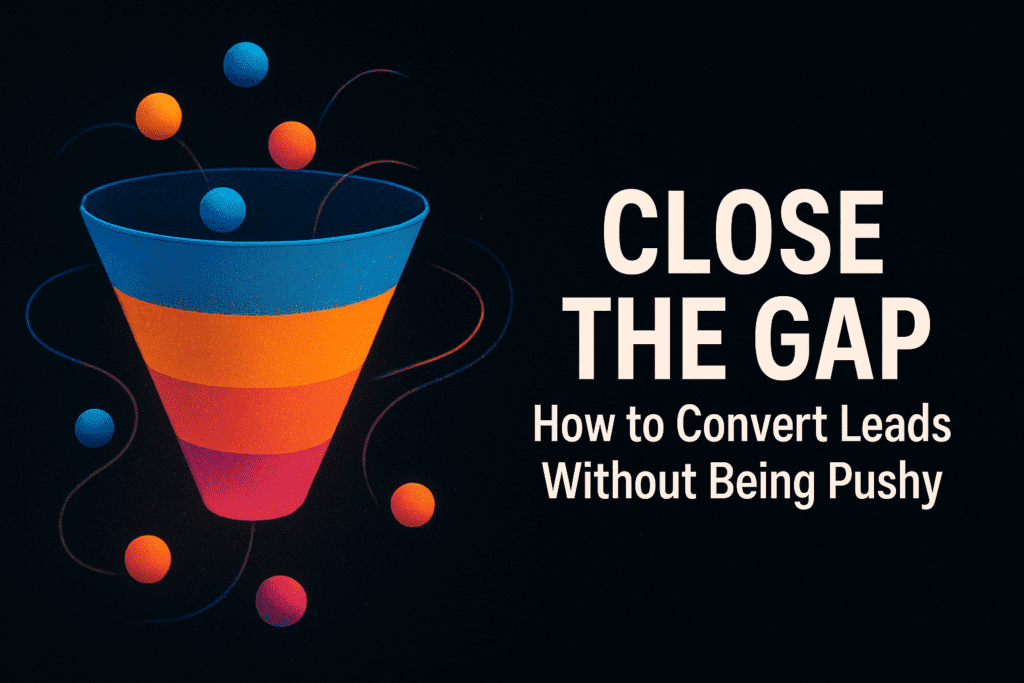
Getting leads is only half the battle. The real magic—and revenue—lies in what happens next. If you’re generating interest but not closing deals, it’s time to refine your follow-up and conversion process. In a digital-first world, people are bombarded with messages, offers, and noise. The entrepreneurs who win are those who master timing, personalization, and trust-building.
Here’s how to turn more leads into loyal customers without coming off like a sales machine.
1. Respond Fast—Speed Matters More Than Ever
The first 5 minutes after a lead expresses interest is your golden window. The faster you follow up, the higher the chance of conversion. Prospects are warm, curious, and actively seeking a solution. Delay, and you lose momentum—and often, the sale.
Action Step: Set up an automated response (via email or SMS) that acknowledges their inquiry, provides value, and outlines next steps. Tools like HubSpot, ActiveCampaign, or Keap can help automate this without losing the personal touch.
Stat to Know: According to InsideSales, responding within 5 minutes makes you 21 times more likely to qualify a lead compared to waiting 30 minutes or longer.
2. Personalize the Experience Based on Their Pain Points
Generic pitches get ignored. Personalized messaging based on a lead’s specific needs or behavior can dramatically increase engagement and trust.
Action Step: Use tags and behavior-based triggers in your CRM to segment leads. Did they click a link in your email? Download a guide on a specific topic? Use that info to tailor your pitch and suggest the most relevant offer or next step.
Example: “Hey Sarah, I saw you downloaded our ‘Launch Strategy Blueprint.’ Here’s a quick 3-minute video breaking down the exact tactic we used to 3X one of our client launches.”
3. Build a Nurture Sequence That Educates and Warms
Not all leads are ready to buy today. Some need time, education, and reassurance. A well-crafted nurture sequence keeps you top-of-mind and positions you as the go-to expert.
Action Step: Create a 5–7 email drip campaign that shares:
- Success stories or testimonials
- Quick wins or free tools
- Behind-the-scenes of your process
- Invitations to connect or ask questions
Each email should feel like a personal note—not a broadcast—and include one clear CTA.
Pro Tip: Add a short “P.S.” at the bottom that teases your offer or availability for a call.
4. Offer a Clear, Low-Friction Next Step
People don’t convert when the next step feels unclear or risky. Make it ridiculously easy for them to say yes—even if it’s just a small commitment.
Action Step: Instead of asking for a big purchase right away, offer a free consult, audit, demo, or even a low-ticket offer that gets them in your world.
Example: “Book a free 15-minute Clarity Call to see if this strategy works for your business—no pitch, just insight.”
Stat to Know: Research from Salesforce shows that 79% of customers are more likely to engage with a brand that demonstrates an understanding of their needs and offers tailored next steps.
5. Use Social Proof to Build Confidence
When a lead is on the fence, stories from others like them can be the tipping point. Social proof reduces anxiety, builds trust, and gives people permission to believe they can win with your solution too.
Action Step: Add case studies, short video testimonials, or review screenshots to your emails, landing pages, and follow-up sequences. Highlight results, but also struggles and how they were overcome.
Bonus Tip: Use the “Before–After–Bridge” formula in your case studies: What was life like before? What changed after working with you? What made the difference?
Converting leads isn’t about pressure—it’s about presence, empathy, and guidance. By responding quickly, personalizing your approach, nurturing consistently, reducing friction, and using social proof, you create a sales process that feels natural and respectful while driving serious results.
Your Move: Review your current lead follow-up process. Where are you losing momentum or leaving leads hanging? Choose one strategy from this list and implement it today. The difference between interest and income is usually one follow-up away.


